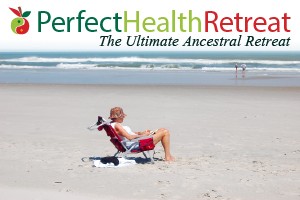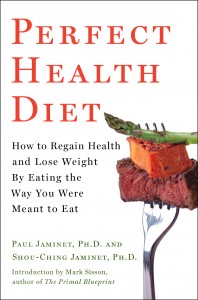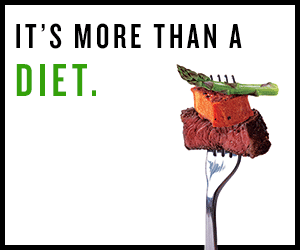The next year could be huge for the ancestral health movement. We have a chance to leap into the mainstream. Shou-Ching and I will certainly be working hard to bring that about. A lot of other people are working hard at it, too.
In order to accomplish this, we have to work together, and to do that it’s extremely important to meet. That’s why I’m very excited about the two big ancestral health gatherings: PaleoFX and the Ancestral Health Symposium. Both have made announcements this week.
PaleoFX: Make Plans Now
PaleoFX will be held March 28-30 in Austin, Texas. March 30 is my birthday and I can’t think of a better way to celebrate than with lots of Paleo friends.
PaleoFX is a terrific event. The 2013 speakers include Mat Lalonde, Sarah Fragoso, Nora Gedgaudas, Kelly Starrett, Diane Sanfilippo, Jimmy Moore, Nell Stephenson, Cate Shanahan, Abel James, Emily Deans, Michelle Tam, and many more, including rising young stars like Dan Pardi of Dan’s Plan.
PaleoFX has strong fitness and food components, as you would expect given the backgrounds of Michelle and Keith Norris of Ancestral Momentum. Fitness sessions and cooking demos run alongside the talks, so PaleoFX is a great opportunity to improve body and spirit as well as mind.
It will be in a new location, the scenic Palmer Events Center, which unfortunately has space limitations placing a strict limit on the number of tickets that can be sold. PaleoFX 2013 is expected to sell out early, so it’s a good idea to make plans soon.
PaleoFX is offering a special deal on tickets purchased by December 1: you’ll be automatically entered in a contest to win access to a VIP dinner with speakers or a full refund of the PaleoFX ticket cost. Visit http://therealpaleofx.com/ to register for PaleoFX 2013.
Ancestral Health Society: Calling for Volunteers
The Ancestral Health Society has released a call for volunteers to help with the Ancestral Health Symposium 2013.
AHS 2013 will be held in Atlanta, Georgia on August 15-17. Right now the Society is looking for volunteers for the following positions:
- Program Chair and Committee – invite presentation proposals, choose speakers, and craft the program schedule.
- Public Relations Committee – help make the event successful.
- Social Chair and Committee – arrange the parties!
- Registration Chair.
- Volunteer Chair.
If you’re interested, please let the Society know.
Building Institutions
At AHS 2012, I volunteered to help the Ancestral Health Society create a scholarly and clinical journal, the Journal of Evolution and Health. We’re currently choosing a publishing platform and solving technical issues; the editorial process is expected to begin in the new year.
We believe that this journal can bring scholarly, clinical, and popular communities together. The many health success stories that have appeared on Paleo/Primal/PHD blogs are strong evidence for the effectiveness of ancestral approaches to health. The journal will provide a forum to assemble evidence systematically and communicate it to a broader audience.
I know of a number of other promising initiatives underway in the community to bring ancestral health to the general public. Many, I’m sure, will bear fruit.
For our part, we’re hopeful that the new edition of our book can help the movement become more popular. We believe our diet is well-grounded scientifically, effective at healing, delicious to eat, and, because it supports gluten-free safe starches, easy for most people to adopt and maintain.
In the spirit of teamwork, we would like to introduce our readers to other worthy members of the ancestral health community. Toward that end, I would like to add a few “resource” pages to the site:
– Food sites. A lot of great food bloggers post PHD-compatible recipes. Some of my favorites: Hilary Finch Hutler’s TummyRumblr; Russ Crandall’s The Domestic Man; Josephine and Henry Svendblad’s Nutty Kitchen; and Francesca, “The Italian Paleo,” at Francesca Eats. I’m sure there are other great food bloggers that should be on this list. All of them deserve more attention.
– Healers. We often get emails from readers asking if we know of doctors, nutritionists, or alternative medicine practitioners in their area who are familiar with PHD and supportive of integrating modern medicine with natural, ancestral approaches to healing. Usually we don’t. Assembling a list of PHD-friendly healers would let us give a better answer.
If you’d like to be listed on one of these resource pages, please send me an email: pauljaminet at perfecthealthdiet dot com.
I have ulterior motives for discovering PHD-friendly foodists and healers. Identifying allies-in-spirit is the first step toward working together. For example, as the journal gets going, we will want to publish clinical case reports; to do so, the editors will need to be in contact with healers. There may be other opportunities. I organized a panel at AHS 2012 on “New Technologies, New Opportunities” to discuss how the ancestral community can take advantage of software technologies that are enabling new forms of collaboration, information sharing, and mutual aid. I don’t have anything definite in mind – yet – but I think there are opportunities to do a better job of bringing great food and ancestral healing to a broad public.
Conclusion
It’s an exciting time in the ancestral health movement. The community is growing fast, but is still small enough that it’s possible to know most of the players personally. If you’d like to be involved, there are many opportunities. Please consider getting involved!












Recent Comments